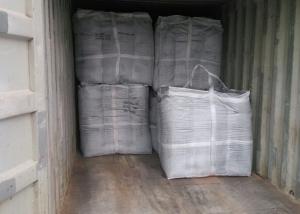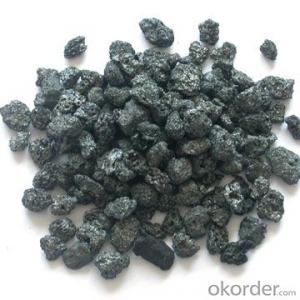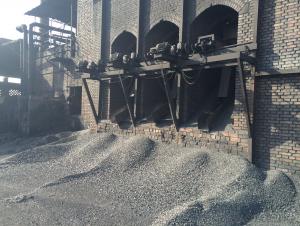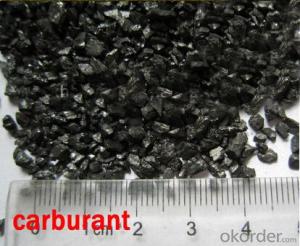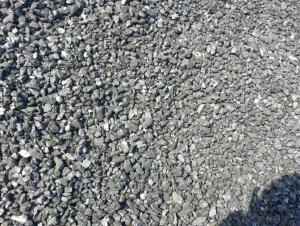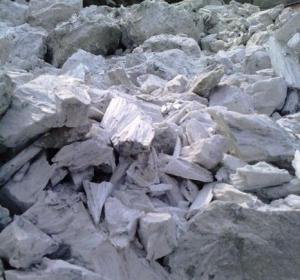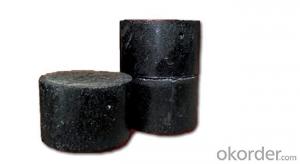Hot Sale High Sulfur Low Ash China CNBM Coke CPC
- Loading Port:
- Tianjin
- Payment Terms:
- TT or LC
- Min Order Qty:
- 20 m.t.
- Supply Capability:
- 3000 m.t./month
OKorder Service Pledge
OKorder Financial Service
You Might Also Like
Quick Details
Place of Origin: Hebei, China (Mainland)
Application: carben addtitives
Dimensions: 1-3mm,1-8mm1-5mm,1-2mm,1-2.5mm,20-40mesh,40-80mesh,80mesh,100mesh,200m
Chemical Composition: calcined coke
grade: briquette
color: black
shape: powder or block
Packaging & Delivery
| Packaging Details: | 50kg/bag 200kg/bag 500kg/bag 1000kg/bag Or Also can be customized according to customer's request |
|---|---|
| Delivery Detail: | 20 days after payment |
Specifications
Hot Sale High Sulfur Low Ash China CNBM Coke CPC
Petroleum coke products can be divided into needle coke, sponge coke, projectile coke and coke breeze four kinds.
Calcined Petroleum Coke
F.C.: 98.5%MIN
ASH: 0.8% MAX
V.M.: 0.7%MAX
S:0.5%MAX
Moisture: 0.5%MAX
Structure
Hot Sale High Sulfur Low Ash China CNBM Coke CPC
Shape: granule
Dimensions: 0-1mm, 1-5mm, 1-6mm, 2-8mm, etc
Product Type: Carbon Additive
C Content (%): 98-99.5% MIN
Working Temperature: -
S Content (%): 0.5%-0.7%MAX
Ash Content (%): 0.7%MAX
Volatile:0.8%MAX
Moisture: 0.5% MAX
ADVANTAGE: low ash & sulfur
COLOR: Black
Feature
Hot Sale High Sulfur Low Ash China CNBM Coke CPC
Physics and chemistry performance :
Unit | Index | |||||
No.1 | No.2 | No.3 |
| |||
Density | g/cm3 | 2.04 | 2.00 | 2.00 | ||
sulphur content | %≤ | 0.5 | 1.0 | 2.5 | ||
volatility | %≤ | 0.5 | 0.5 | 0.5 | ||
ash content | %≤ | 0.5 | 0.5 | 0.5 | ||
moisture | %≤ | 0.3 | 0.5 | 0.5 | ||
charcoal | %≤ | 98.5 | 98.0 | 98.0 | ||
Image
Hot Sale High Sulfur Low Ash China CNBM Coke CPC
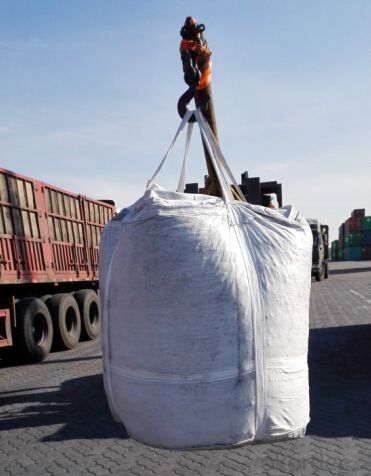
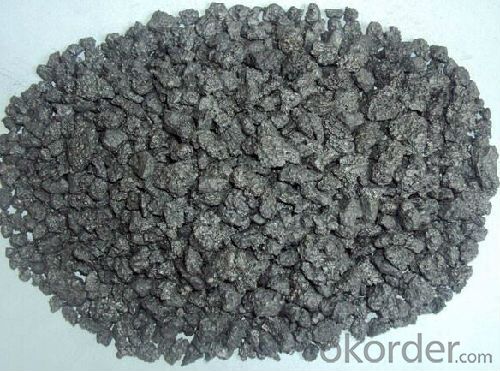
FAQ:
Hot Sale High Sulfur Low Ash China CNBM Coke CPC
How to classify calcined petroleum coke?
1) According to difference of sulfur content, can be divided into high sulfur coke (sulfur content more than 4%), sulphur in coke sulfur content (2% 4%) and low sulfur coke (sulfur content below 2%).
2) Petroleum coke products can be divided into needle coke, sponge coke, projectile coke and coke breeze four kinds:
3) Needle coke, has obvious needle-like structure and fiber texture, mainly used for steel-making in high power and ultra-high power graphite electrode. As a result of needle coke in sulfur content, ash content, volatile matter and true density and so on have strict quality requirements, so the production process of needle coke and raw materials have special requirements.
4) The sponge coke, high chemical reactivity, low content of impurities, mainly used in the aluminum industry and carbon industry.
5) Focal or spherical coke: the projectile shape is round, diameter 0.6-30 mm, usually from the production of high sulphur, high asphaltic residual oil, can only be used as industrial fuel power generation, cement etc.
6) Coke breeze: fluidized coking process, the fine particles (0.1- 0.4 mm) in diameter, high volatile, high expansion coefficient, cannot be directly used for electrode preparation and carbon industry.
Advantage:
Hot Sale High Sulfur Low Ash China CNBM Coke CPC
1. High quality and competitive price.
2. Timely delivery.
3. If any item you like. Please contact us.
Your sincere inquiries are typically answered within 24 hours.
- Q:Often see a lot of cars made of carbon fiber body, is this material flammable?
- No, it's not flammable. You can't burn it.Pre oxidized excess oxygen filaments cannot be burned.
- Q:What are the effects of carbon emissions on the stability of ice shelves?
- Carbon emissions have significant effects on the stability of ice shelves. As carbon dioxide (CO2) and other greenhouse gases are released into the atmosphere, they trap heat and contribute to global warming. This increased global temperature leads to the melting of ice shelves and glaciers. One of the primary effects of carbon emissions on ice shelves is the acceleration of their melting rates. Higher atmospheric temperatures cause more ice to melt, which in turn increases the amount of water flowing into the ocean. This added influx of freshwater can disrupt the delicate balance between the ice shelf and the ocean, potentially leading to ice shelf collapse. Additionally, carbon emissions contribute to the thinning of ice shelves. As the atmosphere warms, the air temperature above the ice shelves rises, leading to increased surface melting. This meltwater then flows into crevasses and cracks, causing further fracturing and weakening of the ice shelves. Over time, this thinning can make the ice shelves more susceptible to breaking apart. The melting of ice shelves due to carbon emissions also has indirect effects on the stability of surrounding ice sheets. Ice shelves act as a buttress, providing resistance to the flow of ice from the glaciers into the ocean. When ice shelves collapse or thin, this resistance is diminished, allowing glaciers to flow more freely into the ocean. This process leads to increased sea level rise, which has significant implications for coastal regions around the world. Furthermore, the loss of ice shelves can disrupt the ecosystem and biodiversity of the surrounding areas. Ice shelves provide a platform for various species, including seals and penguins, to breed and feed. When ice shelves disintegrate, these habitats are destroyed, impacting the entire food chain and ecosystem dynamics. Overall, carbon emissions from human activities have profound effects on the stability of ice shelves. The melting, thinning, and collapse of ice shelves contribute to rising sea levels, disrupt ecosystems, and have far-reaching consequences for coastal communities. It is crucial to mitigate carbon emissions and take proactive measures to protect these vulnerable ice shelves and the delicate balance they maintain in our global climate system.
- Q:How does carbon dioxide affect waste management processes?
- Carbon dioxide (CO2) has a significant impact on waste management processes. One of the main ways in which it affects waste management is through the decomposition of organic waste. When organic waste, such as food scraps or yard waste, is sent to landfills, it undergoes anaerobic decomposition due to the lack of oxygen. This process produces methane (CH4), a potent greenhouse gas that contributes to climate change. Methane is approximately 25 times more effective at trapping heat in the atmosphere than carbon dioxide over a 100-year period. Therefore, the presence of carbon dioxide in waste management processes indirectly results in increased methane emissions, exacerbating the greenhouse effect. Moreover, carbon dioxide emissions from waste management activities can occur during the transportation and disposal of waste. The collection and transportation of waste to landfills or incineration facilities require the use of vehicles that typically run on fossil fuels, releasing carbon dioxide into the atmosphere. Additionally, waste incineration generates carbon dioxide emissions, as the combustion process produces CO2 as a byproduct. To mitigate the impact of carbon dioxide on waste management, several strategies can be employed. Firstly, reducing the amount of waste generated through waste reduction and recycling efforts can help minimize the need for landfilling or incineration, thereby reducing carbon dioxide emissions associated with waste management. Furthermore, implementing waste-to-energy technologies, such as anaerobic digestion or landfill gas capture, can help to harness the energy potential of organic waste, while simultaneously reducing methane emissions. Anaerobic digestion converts organic waste into biogas, which can be used to generate electricity or heat, while landfill gas capture systems collect methane emitted from landfills and use it for energy production. Lastly, transitioning to low-carbon transportation options, such as electric or hybrid vehicles, for waste collection and transportation can help reduce carbon dioxide emissions associated with waste management processes. In conclusion, carbon dioxide affects waste management processes by contributing to the production of methane during the decomposition of organic waste and through emissions generated during waste transportation and disposal. By implementing waste reduction strategies, waste-to-energy technologies, and transitioning to low-carbon transportation options, the impact of carbon dioxide on waste management can be minimized, resulting in more sustainable and environmentally friendly waste management practices.
- Q:Is carbon a solid, liquid, or gas at room temperature?
- Carbon is a solid at room temperature.
- Q:What is the role of carbon in photosynthesis?
- The role of carbon in photosynthesis is essential. Carbon dioxide (CO2) is one of the primary reactants in the process of photosynthesis. During photosynthesis, plants and other photosynthetic organisms use carbon dioxide along with water and sunlight energy to produce glucose (a simple sugar). This glucose serves as the main source of energy for the plant's growth and development. Carbon dioxide enters the leaf through tiny pores called stomata and diffuses into the chloroplasts, where photosynthesis takes place. Inside the chloroplasts, carbon dioxide combines with water in the presence of sunlight and chlorophyll to undergo a series of chemical reactions known as the Calvin cycle or the dark reactions. In this cycle, glucose is synthesized and stored as a source of energy for the plant. The carbon atoms from carbon dioxide are the building blocks of glucose and other organic compounds formed during photosynthesis. Through a complex series of enzymatic reactions, carbon dioxide is converted into carbohydrates, lipids, proteins, and nucleic acids, which are essential for the plant's growth and survival. Photosynthesis not only helps in the production of glucose but also plays a significant role in the global carbon cycle. It is the process through which plants remove carbon dioxide from the atmosphere and release oxygen as a byproduct. This helps in regulating the levels of carbon dioxide in the atmosphere, mitigating climate change, and maintaining the oxygen balance necessary for all living organisms. In summary, carbon plays a crucial role in photosynthesis by serving as the raw material for the synthesis of glucose and other organic compounds. It is through this process that plants convert carbon dioxide into energy-rich molecules, contributing to their growth, survival, and the overall balance of carbon in the Earth's atmosphere.
- Q:How is carbon used in the production of nanoelectronics?
- The production of nanoelectronics involves the diverse utilization of carbon. One of the most notable applications is seen in the creation of carbon nanotubes (CNTs), which are cylindrical structures composed solely of carbon atoms. These nanotubes possess exceptional electrical and mechanical properties that render them highly suitable for incorporation into nanoelectronic devices. CNTs can serve as transistors, which serve as the fundamental building blocks of electronic circuits. Due to their diminutive size and outstanding electrical conductivity, CNT transistors have the capacity to generate high-performance, low-power devices. Consequently, they hold the potential to supplant conventional silicon transistors, thus enabling the development of more sophisticated and compact electronic devices. In addition, carbon plays a pivotal role in the production of graphene, a single layer of carbon atoms arranged in a two-dimensional honeycomb lattice. Graphene exhibits extraordinary electrical conductivity, thermal conductivity, and mechanical strength. Consequently, it can function as a conductive material in nanoelectronics, thereby facilitating the creation of swifter and more efficient electronic devices. Moreover, carbon-based materials can be employed in nanoelectronics for energy storage purposes. For example, carbon nanotubes and graphene can be harnessed in supercapacitors, energy storage devices that possess the ability to rapidly store and discharge substantial amounts of electrical energy. These carbon-based energy storage systems hold the potential to revolutionize the realm of portable electronics and electric vehicles. In conclusion, the extensive utilization of carbon in the production of nanoelectronics can be observed. Its distinctive properties, including heightened electrical conductivity, mechanical strength, and thermal conductivity, render it an ideal material for the advancement of high-performance electronic devices. Carbon nanotubes, graphene, and other carbon-based materials serve as crucial components in the fabrication of nanoelectronic devices, thereby enabling progress in computing power, energy storage, and the miniaturization of electronic components.
- Q:What are the effects of carbon emissions on animal populations?
- Animal populations are profoundly affected by carbon emissions, which result in the disruption of ecosystems and the loss of habitats. The rise in carbon dioxide levels in the atmosphere leads to an increase in the Earth's temperature, causing climate change. This change in climate alters the availability of resources like food and water, making survival and reproduction more challenging for animals. Moreover, carbon emissions contribute to the acidification of the ocean. Seawater absorbs carbon dioxide, creating carbonic acid and lowering the ocean's pH. This acidification negatively impacts marine life, especially species that rely on calcium carbonate to build shells or skeletons, such as corals and shellfish. As their habitats become more corrosive, these animals struggle to survive and reproduce, resulting in significant population declines. Additionally, carbon emissions are closely associated with air pollution, which directly and indirectly affects animal populations. High levels of air pollution, particularly nitrogen dioxide and particulate matter, can cause respiratory problems and other health issues in animals. This reduces their fitness and increases mortality rates, ultimately influencing the overall population size. Lastly, carbon emissions contribute to deforestation and the destruction of habitats. Human activities like agriculture and urbanization clear more land, displacing animal populations and forcing them to adapt to fragmented landscapes. This fragmentation limits their movement, access to resources, and increases their vulnerability to predation and other threats. In conclusion, carbon emissions have extensive effects on animal populations, including habitat loss, climate change, ocean acidification, air pollution, and deforestation. These impacts disrupt ecosystems and jeopardize the survival of numerous animal species. It is crucial to address carbon emissions and reduce our carbon footprint to mitigate these detrimental effects and safeguard the Earth's biodiversity.
- Q:How does carbon affect the ozone layer?
- Carbon does not directly affect the ozone layer. However, certain carbon compounds, such as chlorofluorocarbons (CFCs), can release chlorine atoms when they reach the stratosphere. These chlorine atoms can then react with ozone molecules, leading to the depletion of the ozone layer.
- Q:How is carbon used in the production of paints and pigments?
- Carbon is widely used in the production of paints and pigments due to its unique properties and versatility. One of the primary ways carbon is utilized is through the production of carbon black. Carbon black is a fine powder made from the incomplete combustion of hydrocarbons, such as coal tar, petroleum, or natural gas. It is extensively used as a pigment in various types of paints, inks, and coatings. The dark color of carbon black makes it a popular choice for providing intense black pigmentation in paints and pigments. It is highly stable and resistant to fading, which ensures that the color remains vibrant over time. Additionally, carbon black has excellent opacity, allowing it to cover other colors effectively and create a solid base for further pigmentation. Carbon black also enhances the durability and performance of paints and coatings. It acts as a reinforcing agent, improving the mechanical properties of the final product. It increases the strength, toughness, and resistance to abrasion, making the paint or coating more long-lasting and resistant to wear and tear. Furthermore, carbon black is an electrically conductive material. This property makes it a valuable component in a wide range of specialty coatings, including anti-static coatings and electromagnetic shielding coatings. These coatings are used in various industries, such as electronics, automotive, and aerospace, where electrical conductivity or protection against electromagnetic interference is critical. Apart from carbon black, other forms of carbon, such as graphite and carbon nanotubes, are also used in the production of specialized paints and pigments. Graphite is commonly used in high-performance coatings due to its lubricating properties and resistance to extreme temperatures. Carbon nanotubes, on the other hand, offer unique optical, electrical, and mechanical properties, making them suitable for advanced coatings and pigments in various applications. In summary, carbon plays a crucial role in the production of paints and pigments by providing intense black pigmentation, enhancing durability, and offering unique properties for specialized coatings. Its versatility makes it a valuable ingredient in the paint and pigment industry, ensuring the production of high-quality, long-lasting, and visually appealing products.
- Q:What are the different types of carbon-based pigments?
- Various industries widely use several different types of carbon-based pigments. Some of the most commonly used types are carbon black, graphite, charcoal, and lampblack. Carbon black, renowned for its intense black color, is a highly pure form of carbon produced through the incomplete combustion of hydrocarbon fuels. It finds extensive applications in inks, paints, plastics, and rubber products. Graphite, on the other hand, is an important carbon-based pigment known for its dark gray to black shade. It is a brittle material that can be easily crushed into a fine powder. Graphite is primarily used in pencils due to its ability to leave a smooth and consistent mark on paper. Additionally, it finds utility in lubricants, batteries, and electrical conductors. Charcoal, obtained by burning wood or organic materials without oxygen, is a carbon-based pigment admired for its deep black color. Artists commonly use charcoal as a drawing medium because it can be easily manipulated and smudged on paper, allowing for the creation of various tones and textures. Lampblack, also referred to as carbon black or soot, is a pigment produced by burning organic materials like oil or wood. It possesses a profound black hue and is frequently employed in printing inks, coatings, and dyes. Lampblack is also utilized in diverse industrial applications, including as a coloring agent in plastics and rubber products. These examples represent only a fraction of the diverse carbon-based pigments commonly employed. Each type possesses unique attributes and serves essential purposes in various industries.
1. Manufacturer Overview |
|
|---|---|
| Location | |
| Year Established | |
| Annual Output Value | |
| Main Markets | |
| Company Certifications | |
2. Manufacturer Certificates |
|
|---|---|
| a) Certification Name | |
| Range | |
| Reference | |
| Validity Period | |
3. Manufacturer Capability |
|
|---|---|
| a)Trade Capacity | |
| Nearest Port | |
| Export Percentage | |
| No.of Employees in Trade Department | |
| Language Spoken: | |
| b)Factory Information | |
| Factory Size: | |
| No. of Production Lines | |
| Contract Manufacturing | |
| Product Price Range | |
Send your message to us
Hot Sale High Sulfur Low Ash China CNBM Coke CPC
- Loading Port:
- Tianjin
- Payment Terms:
- TT or LC
- Min Order Qty:
- 20 m.t.
- Supply Capability:
- 3000 m.t./month
OKorder Service Pledge
OKorder Financial Service
Similar products
New products
Hot products
Hot Searches
